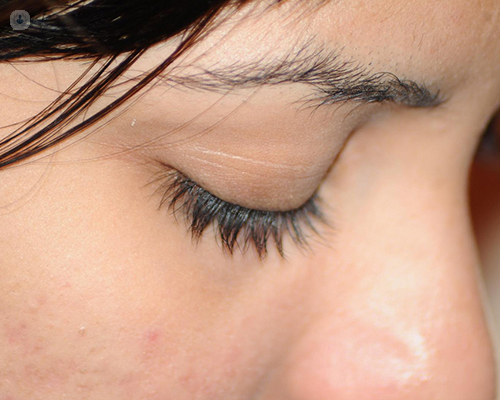


What is blepharospasm?
Blepharospasm is a type of muscle spasm or dystonia affecting the muscles that control the eyelids, which causes them to close involuntarily. This can cause rapid and/or frequent blinking, an inability to open the eye (apraxia), the eyes forcing themselves closed, or a combination of these symptoms. Other facial muscles can be affected too, with twitching symptoms radiating across the face and sometimes even the neck.
What are the symptoms of blepharospasm?
Blepharospasm is a spasm of the muscles around the eye, which can cause the following symptoms:
- Twitching
- Frequent, uncontrolled blinking
- Forced closing of the eyes
- Inability to open the eyes
- Sensitivity to light
- Dry eyes
- Blurry vision
Causes of blepharospasm
Exactly what causes blepharospasm is not fully understood. There is some evidence from neuroimaging that dysfunction of the basal ganglia may play a part.
Some patients have a history of dry eyes and light sensitivity before the onset of blepharospasm, but others do not. It has been theorised that genetics play a part, at least in some cases, with some patients having family histories of blepharospasm and/or chronic eye irritations.
In addition, other possible causes and risk factors include:
- Side effects of some medications, e.g. Parkinson’s medication
- Dry eye or inflammation/irritation of the eye
- Multiple sclerosis
Can it be prevented?
Benign essential blepharospasm (BEB), i.e. blepharospasm that is not associated with another disease or cause cannot be prevented. However, secondary blepharospasm may be prevented by taking steps to avoid the cause, e.g. by avoiding triggers and irritants like bright lights, treating the underlying condition or decreasing the dose of causal medication (if instructed by your doctor). If the patient tends to have dry eyes, it is recommended to apply lubricating drops
What is the treatment for blepharospasm?
Keeping the eyes lubricated with eye drops, avoiding irritants and things that trigger twitching, and wearing dark sunglasses to avoid exposure to bright light can all aid in the management of the condition.
In the case of secondary blepharospasm, treating the underlying condition may cause the blepharospasm to disappear.
Medical and surgical measures may be necessary to deal with blepharospasm that is severely affecting the patient’s life:
- Botulinum toxin (Botox) – used to paralyse the eyelid muscles, stopping the uncontrolled contractions. Injections are needed periodically.
- Oral medications – a number of options exist, but they may not be effective in all patients
- Blepharoplasty – surgery to remove excess skin and muscle from the upper eyelid. This can be beneficial in some patients
- Myectomy – surgery to remove some of the muscles and nerves of the eyelid
- Brow suspension surgery – surgery to suspend the eyelid unit from the brow. This is particularly effective for patients whose blepharospasm causes them to be unable to open their eyes.
